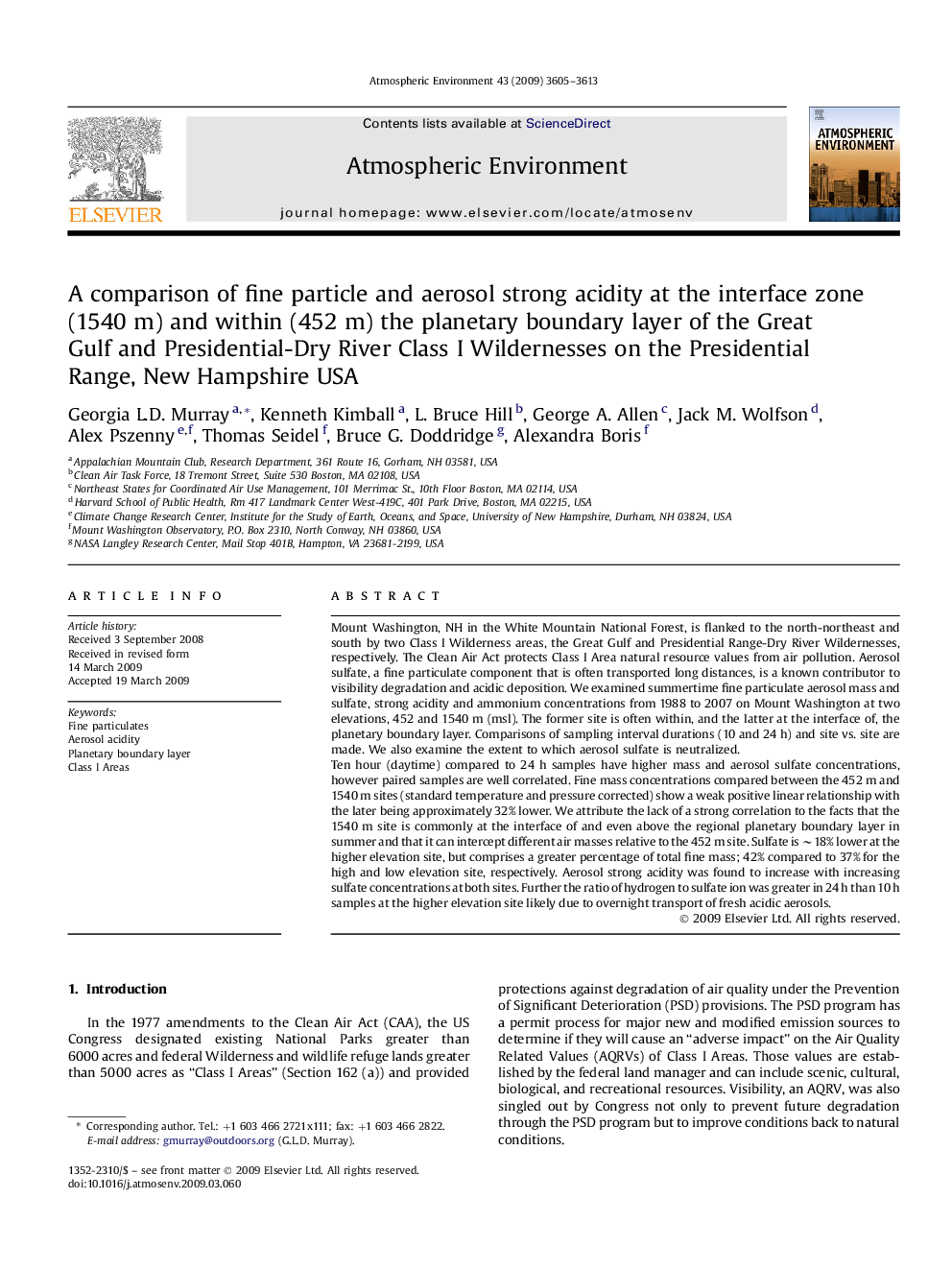| کد مقاله | کد نشریه | سال انتشار | مقاله انگلیسی | نسخه تمام متن |
|---|---|---|---|---|
| 4440902 | 1620427 | 2009 | 9 صفحه PDF | دانلود رایگان |

Mount Washington, NH in the White Mountain National Forest, is flanked to the north-northeast and south by two Class I Wilderness areas, the Great Gulf and Presidential Range-Dry River Wildernesses, respectively. The Clean Air Act protects Class I Area natural resource values from air pollution. Aerosol sulfate, a fine particulate component that is often transported long distances, is a known contributor to visibility degradation and acidic deposition. We examined summertime fine particulate aerosol mass and sulfate, strong acidity and ammonium concentrations from 1988 to 2007 on Mount Washington at two elevations, 452 and 1540 m (msl). The former site is often within, and the latter at the interface of, the planetary boundary layer. Comparisons of sampling interval durations (10 and 24 h) and site vs. site are made. We also examine the extent to which aerosol sulfate is neutralized.Ten hour (daytime) compared to 24 h samples have higher mass and aerosol sulfate concentrations, however paired samples are well correlated. Fine mass concentrations compared between the 452 m and 1540 m sites (standard temperature and pressure corrected) show a weak positive linear relationship with the later being approximately 32% lower. We attribute the lack of a strong correlation to the facts that the 1540 m site is commonly at the interface of and even above the regional planetary boundary layer in summer and that it can intercept different air masses relative to the 452 m site. Sulfate is ∼18% lower at the higher elevation site, but comprises a greater percentage of total fine mass; 42% compared to 37% for the high and low elevation site, respectively. Aerosol strong acidity was found to increase with increasing sulfate concentrations at both sites. Further the ratio of hydrogen to sulfate ion was greater in 24 h than 10 h samples at the higher elevation site likely due to overnight transport of fresh acidic aerosols.
Journal: Atmospheric Environment - Volume 43, Issues 22–23, July 2009, Pages 3605–3613